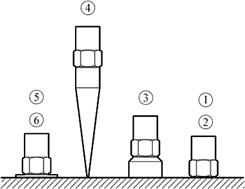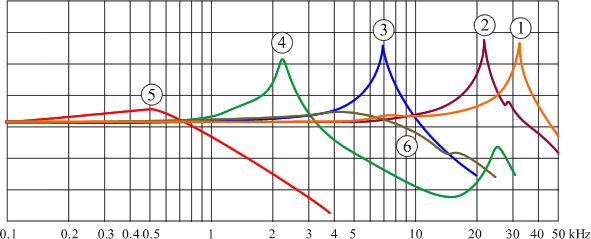Accelerometer & related products FAQ


The NP3110 accelerometer catalog specification indicates as follows:
Resonant frequency: 40kHz
Frequency range: From 5kHz to 15kHz
The graph that is provided in the characteristic table attached to the detector shows a gently-sloping hill shape representing the frequency in the X axis and the sensitivity in the Y axis, where the section within the frequency range from 5Hz to 15Hz forms a flat shape (within 3dB) and the slope peaks at around 40kHz. Attenuation increases when the frequency exceeds 40kHz.
In the range around 40kHz, measurement becomes unstable due to the resonance of the accelerometer main unit and this indicates that the sensitivity improves from 15kHz to 40kHz (the output voltage becomes higher than the actual voltage). It can be used for checking the presence of high frequency vibration only by ignoring the precision. However, it is recommended to use one of the following high resonant frequency models
NP-3210 80kHz
NP-2910 60kHz
LV Series laser Doppler vibrometer
Note
- Mounting:
When mounting an accelerometer on the measuring object, there is a problem of contact resonance. When the output of accelerometer is checked by using the measuring object as the reference by mounting accelerometer with a magnet base, double-sided tape, adhesive, or a screw fixing, frequency characteristics similar to those of simple accelerometer can be obtained. However, the resonant frequency substantially varies according to the manner of mounting the accelerometer. In general, the frequency decreases in the order of screw fixing, adhesive, magnet base, and double-sided tape (thick) and in the magnet base, the frequency is about 7kHz, which is substantially lower than the accelerometer characteristic. When high frequencies are to be measured, utmost caution is necessary for the manner of mounting the accelerometer. Integrated movements with the measuring object are the basis of the mounting accelerometer. (Refer to the instruction manual.)
- Weight:
If the measuring object is too light, the weight of the accelerometer itself may impact the measurement. The weight of the accelerometer must be 1/100 of the weight of the measuring object, or no more than 1/10.Sensor mounting method


Contact Resonant Frequency Characteristics
Revised:2002/08/19